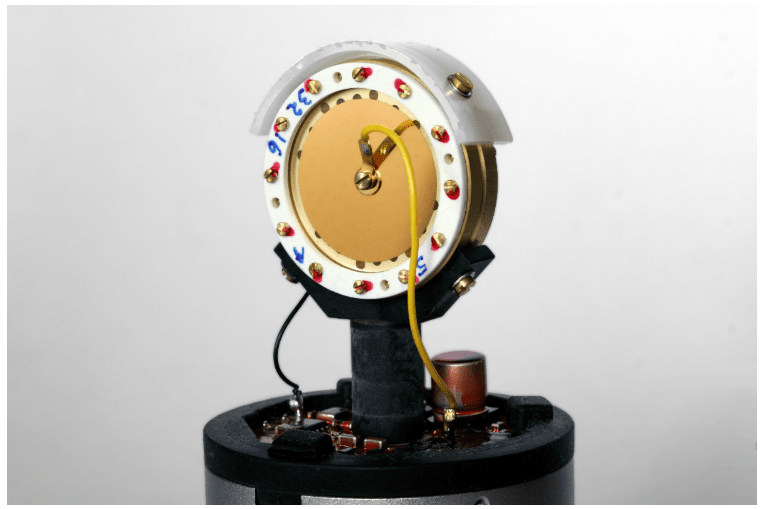
When shopping for a condenser microphone, you will see that they are offered in large and small diaphragms. So what is a large diaphragm condenser microphone?
A large diaphragm condenser microphone is a mic that has a capsule that is between 32-34 mm in diameter, but the actual membrane inside the capsule is between 22-27 mm or just under 1”.
The size of the capsule makes a lot of difference in how your signal is going to sound after it’s recorded. Let’s explore a little further the theory behind a large diaphragm, the sound characteristics, advantages, and disadvantages.
Why the Size of the Diaphragm Matters.

A mic’s function is to pick air pressure vibrations generated by traveling sound waves and convert them into an electric signal. To achieve this task, manufacturers use very sensitive materials that can vibrate and behave very similarly to the original sound wave.
If a membrane has more surface area it can capture more acoustic energy from the air pressure vibrations, producing a higher electric signal, thus a more accurate signal. With a higher electric signal, you get better performance because your signal to noise ratio will be lower when compared to other types of microphones such as dynamic microphones.
In simpler words, a large condenser membrane can sense even the smallest nuances. Because of the larger generated electric signal, it can deliver better results when recording vocals or solo instruments.
The Sound Characteristics
A large-diaphragm condenser microphone tends to widen the frequency response at lower frequencies. This characteristic reduces de proximity effect providing a full wide sound even if the singer moves away from the mic’s capsule. The changes in tone are not as noticeable when a larger membrane is used.
When using a large-diaphragm mic on vocals, the sound it produces is silky, bright, with crisp, clear highs. When used on instruments, the sound is smooth, natural with spacious nuances.
Another outstanding sonic characteristic of large diaphragm mics is that depending on the preamplifier or audio interface used, they produce a warm unique sound that is soothing.
Most professional recording artists use large-diaphragm condenser microphones when recording in the studio. In controlled environments, the results are excellent.
Advantages
- Large-diaphragm mics make sound sources sound beautiful, bigger, and airier.
- Thanks to their larger size membrane, it makes them very versatile in the studio.
- They have low self-noise levels when compared to small-diaphragm condensers.
Disadvantages
- The larger membrane tends to distort easier when used to mike high sound pressure level sources.
- Not the right choice for live performance, due to their more significant membrane and higher gain it makes them feedback easier, plus they pick a lot of noise. You need to be well trained and have a lot of experience to deal with these mics on the stage.
- It’s not recommended to use this type of microphone for miking bass-heavy sound sources; it will distort easily. For this type of situation is recommended to use small-diaphragm condensers or dynamic microphones.
What Is a Large Diaphragm Condenser Microphone Used For?
This type of microphone can be used to record just about anything you can think of but is mostly used on vocals, for soloist on recording studios. It is also widely used for musical instruments such as pianos, guitars, violins, brass, drums, or any acoustic instrument. They are good at picking every nuance, even the subtle sounds while recording.
There is no specific rule that dictates which microphone should be used in a particular situation; the only way to know which one sounds best is to experiment. But in most cases, large-diaphragm condensers are used as described in the previous paragraph.
Large Diaphragm Vs. Small Diaphragm Condenser Microphones
Conclusion
Large-diaphragm condenser microphones are an excellent choice for studio recording; they offer high sensitivity and can pick up more sound energy. Vocals sound fuller and warmer thanks to their wide frequency response.
When used to mike acoustic instruments, the results are excellent because they can deliver vibrant and rich sound.
This type of mic is not recommended for live situations. Still, if you have the experience of adequately placing and equalizing the sound, good results are possible.
I hope that after reading this post, you have a clearer understanding of what is a large-diaphragm condenser microphone. If you have any questions or comments, please leave a comment or use the contact us form. I will get back to you within three business days. Thanks for reading my blog.